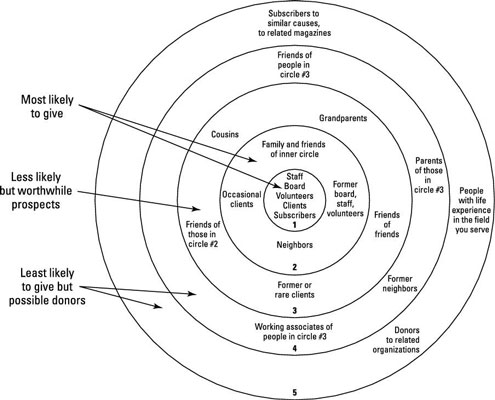Corporate donors are for-profit organizations that contribute to nonprofit fundraising campaigns and initiatives as part of their Corporate Social Responsibility (CSR). This contribution can come in many forms, from monetary sponsorship to in-kind donations.
Corporate donations can be a valuable avenue to diversify your fundraising efforts and secure a new revenue stream in your nonprofit. It’s also a great way to raise awareness about your organization’s cause. Through corporate giving campaigns, you can often reach audiences who align with your mission.
More so, corporate sponsorships can add more credibility to your nonprofit organization and build trust with your donor base. By partnering with a reputable corporation or local business, you are saying to donors, “Hey, this business’ brand, that you already trust, also trusts me, so you should too.”
In 2020, corporations in the United States gave over $20 billion to nonprofit organizations, and 7 out of 10 Canadian businesses are corporate donors. Corporate philanthropy is on the rise, and many businesses are searching for nonprofits to work with. Now may be a good time for you to reach out to a corporate or that friendly local business you like and see if you can strike a partnership.
If you’re considering partnering with a corporate donor, this article is for you. It discusses how to identify a suitable corporate donation partner and highlights tips to keep in mind to make the partnership work.
Boost Your Fundraising Outcomes with KIT
Using KIT, you can analyze your nonprofit’s fundraising performance and use that information to plan and make the most of your next campaign. KIT can help you identify donors in your database who are more likely to donate to specific campaigns.
How to Identify a Corporate Donor for Your Nonprofit?
Who you approach is more important than what you are asking for when seeking corporate donors. Corporate sponsorship is a partnership between a nonprofit and a business. It’s more than a transaction; it’s a symbiotic relationship. So, both partners need to be good fits for each other.
Here are three steps you can take to identify a corporate donor for your nonprofit organization:
1. Leverage Your Nonprofit Team’s Existing Relationships
Chances are your board members, CEO, or executive directors already have longstanding relationships with business owners or corporations. Those contacts could be a good place to start when seeking corporate donors. You could save yourself the hassle of cold calls by first considering the relationships your nonprofit team already has. Most businesses are likely to consider working with a nonprofit with which they have an existing relationship.
Here’s a diagram by Stan Hutton, Frances Phillips that illustrates how you can find potential nonprofit corporate donors based on the connections your team already has.
As you work your way out through each circle, you can also reach out to your most engaged donors and ask them to recommend corporate partners or refer your nonprofit to a business they have a relationship with.

2. Find The Right Contact to Reach Out To
Although you are looking to partner with a business, you are really just approaching people who represent those corporations. You are more likely to find success if you reach out to a person you have a connection with at a company than cold emailing, so search for those personal connections. Whatever you do, please avoid sending an email to the generic info@company.com email unless you have to. Even then, we don’t recommend it.
3. Think About Compatibility
We aren’t dating experts, but we know that compatibility is key and that ethos is important when finding corporate donors. You want to partner with a company that aligns with your nonprofit’s mission and shares your values.
For example, a nonprofit organization that advocates for healthy ocean ecosystems may not want to work with a corporation known to be a plastic polluter, as their mission doesn’t align.
Also, think about scale. It may be tempting as a small nonprofit to seek sponsorship from a large company, but this may not always be the most fruitful pursuit. They may require more administration than your nonprofit organization can provide. You should seek corporate partnerships from businesses proportionate to your organization’s size.
How to Win a Corporate Partnership or Sponsorship for Your Nonprofit
Now that you know who to pursue, you need to plan how to present your nonprofit organization in the best possible light to your potential corporate sponsors or donors. Here are four ways you can do that:
1. Demonstrate the Value of the Corporate Partnership
When preparing your corporate partnership proposal, you need to state your nonprofit’s mission and campaign goals to companies. Be concise about what you are asking for, and be clear about how your nonprofit intends to make an impact.
Unlike individual donors, corporate donors will often have a specific agenda in mind when entering a partnership. They may have an allocated budget for corporate sponsorships that they need to spend or a marketing angle that they want to try out. Don’t shy away from meeting them halfway. Show them how a partnership with your nonprofit can help them meet their goals.
Different industries will naturally suit different value propositions, so be sure to tailor your value proposition to the industry you are approaching. For example, a business in the retail industry may prefer contributing in-kind donations, so you can make this a part of your ask.
Evaluate Your Fundraising Performance with this Dashboard
Use this FREE Fundraising Analysis Dashboard to assess your nonprofit’s campaign performance and identify growth opportunities.
2. Offer Non-Monetary Donation Options
Some corporate donors prefer making non-monetary or in-kind donations to nonprofits. An in-kind sponsorship could involve the donation of goods, services, or event venues. It could also be as straightforward as an employee volunteering program or providing marketing and media coverage for your nonprofit’s fundraising campaign or events. Keep this in mind when writing your corporate sponsorship proposal.
3. Offer Tiered Sponsorship Packages
Your corporate sponsors would appreciate the opportunity to choose from a list of sponsorship packages as they decide the best way to contribute to your nonprofit. You can create tiered corporate sponsorship packages that suggest the different levels of contributions a business can make.
Your sponsorship packages should clearly outline what the business will receive in return for their donation. For example, a $5,000 donation could mean the business’ logo will be displayed on your fundraising campaign marketing materials. Meanwhile, a $10,000 donation could mean that in addition to the business’ logo being displayed on fundraising campaign marketing materials, a representative from the business would be invited to speak at the campaign’s event.
More so, make sure you have an acknowledgment plan in place for each sponsorship tier.
4. Do The Prep Work
You want to make the execution of a corporate giving campaign as simple as possible for the business you are working with. You can do this by creating samples of fundraising campaign assets ahead of your meeting with potential corporate donors and sharing a strategic plan of how you intend to accomplish the partnership’s goals. This is something you can reuse for future corporate giving campaigns, so it is worth the effort.
FREE Donor Profile Template for Fundraisers
Use this template to record and track important details about your donors and prospects so you can target the right individuals for the right fundraising campaigns.
At the end of the day, seeking corporate donors is just fundraising, so don’t forget all of the best practices you already know and use in your daily work. Everything from segmenting contacts, making the right ask, and having a donor stewardship plan in place is vital.
Corporate donors can help round out your fundraising plan and lead to solid, long-term partnerships for your nonprofit organization. So, be sure to identify the right business to partner with and use the tips shared in this article to approach them.

Ally Smith
Content Writer at KIT
With a passion for nonprofit innovation, Ally has spent her career helping build community capacity and supporting social innovation as a customer success manager turned, youth worker, turned social researcher.
After leaving the tech start-up landscape, she pursued a Master’s in Philanthropy and Nonprofit Leadership and has since supported nonprofits to innovate and grow. A Canadian ex-pat and social entrepreneur based in Edinburgh, she enjoys hiking, baking bread in a panic, and pursuing the full Scottish experience- rain and rugby included!







